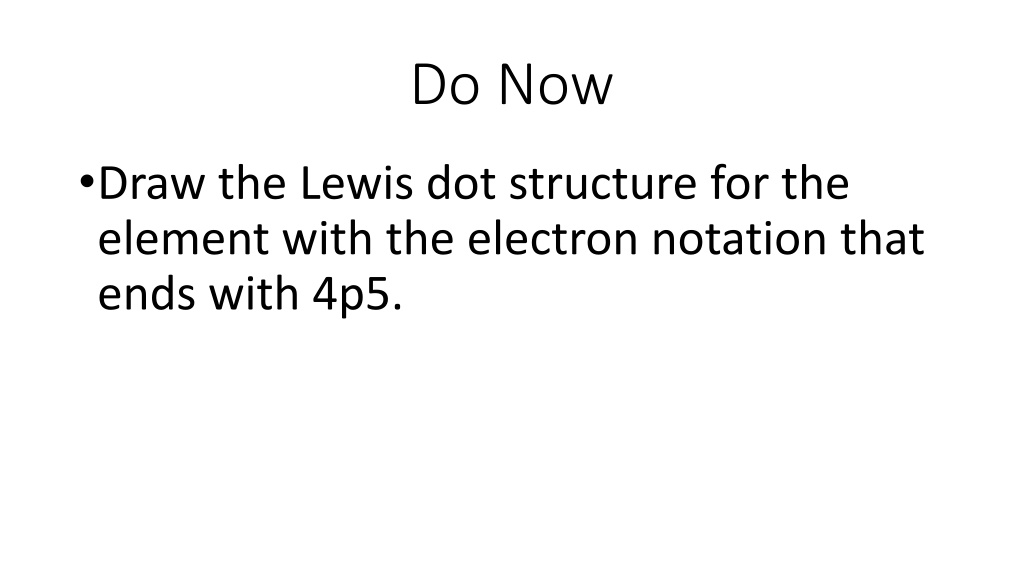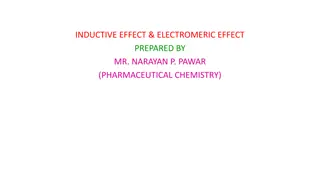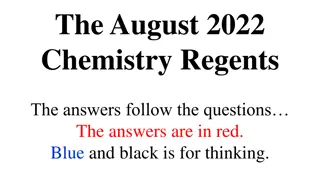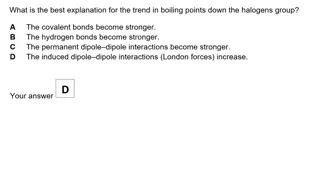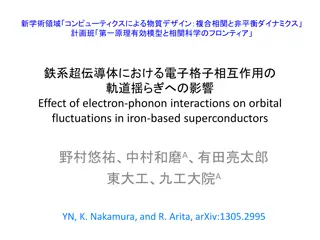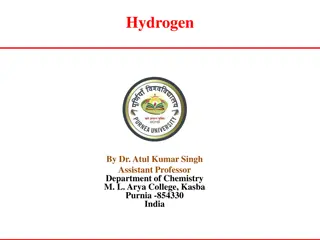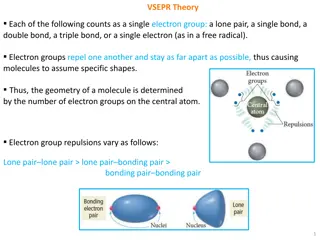Understanding Properties of Light and Electron Configuration in Chemistry
Exploring the properties of light, including wavelength, frequency, and energy, alongside the electromagnetic spectrum. Additionally, drawing Lewis dot structures for elements based on electron configurations.
Download Presentation

Please find below an Image/Link to download the presentation.
The content on the website is provided AS IS for your information and personal use only. It may not be sold, licensed, or shared on other websites without obtaining consent from the author. Download presentation by click this link. If you encounter any issues during the download, it is possible that the publisher has removed the file from their server.
E N D
Presentation Transcript
Do Now Draw the Lewis dot structure for the element with the electron notation that ends with 4p5.
Today Wavelength and Frequency of Light. Atomic Emission Spectra. Frequency of light and energy. Homework: Ch 5 problems 14-16, 21, 22, 30, 32, 35, 37, 41, 42, 54, 55, 56
Properties of Light Light travels in waves. Waves have an amplitude, wavelength, and a frequency. C-Speed of Light = 2.998x10^8m/s.
C=V C-Speed of light. 2.998x10^8 m/s. The speed of light is constant. -Wavelength. The distance in meters between the beginning and end of one full oscillation of a wave. V-Frequency [Hz]. How often (per second) a full wave passes a given point.
Inverse Proportion Speed of light is constant. The longer the wavelength, the less times that a full wave passes a stationary point. The shorter the wavelength, the more times that a full wave passes a stationary point.
The Electromagnetic Spectrum Radio waves- =100m. Low energy. Light- =700 to 380 nm (10^(-9)). Gamma rays- =10^(-14)m. Light is the only portion of the electromagnetic spectrum that we can perceive. What % of the spectrum is that?
WHAT???!!! The human eye can only see 3.1x10^(- 21) % of the electromagnetic spectrum. That s 0.0000000000000000000031%. With all those other waves flying around, it s no wonder I can never get a wifi signal.
Determining and V If I have I can find V. If I have V I can find . This is because C is the same for all waves of the electromagnetic spectrum. C= V.
The wavelength of the waves in my microwave is 12.2cm. What is the frequency of my microwave oven?
The frequency of x-rays is 3x10^18 Hz. What is the wavelength of x-rays?
Green light has a wavelength of 550nm. What is it s frequency? Hz=1/s.
Atomic Spectra When atoms absorb energy, their e- move to higher energy levels. The e- loses that energy quickly and they release light as they return to their original energy level.
Emission Spectra Depending on the e- configuration, light is released in different frequencies. This is because they have e- changing on different energy levels. This makes different materials different colors.
e- and Atomic Spectra Light given off by atoms is directly proportional to the energy change of the electron (quanta). E=hv E-Energy is measured in joules [j]. V-still means frequency [1/s].
h-The Plank Constant A constant value that relates the frequency of light given off by an atom to the energy (quanta) released. H = 6.626 x 10^(-34) [j/s]
Light with a wavelength of 470nm is emitted by an atom. What is the energy given off by the atom? Answer in joules.
An atom absorbs 2.6x10^9(-40)j. What is the frequency of light emitted by the atom?
Using Frequency (V) to connect to E The V in C= V has the same value of V in the equation E=hv. If you can solve for V in one equation, you can find out a value in the other equation. We are mathemagicians!
The wavelength of AM radio waves is around 30m. What is the energy contained in an AM radio wave? Answer in joules.
An electron releases 3x10^-16 joules of energy. What is the wavelength of the wave emitted by the atom?
